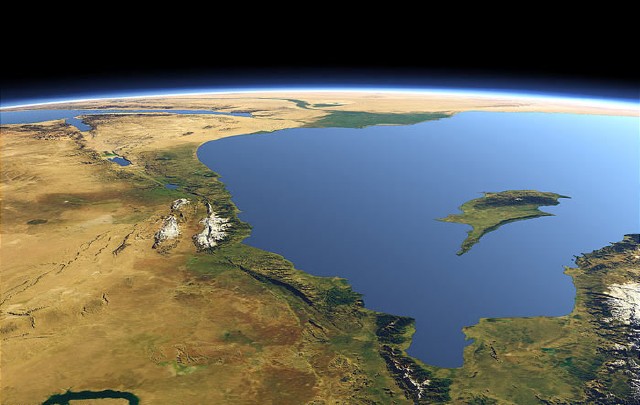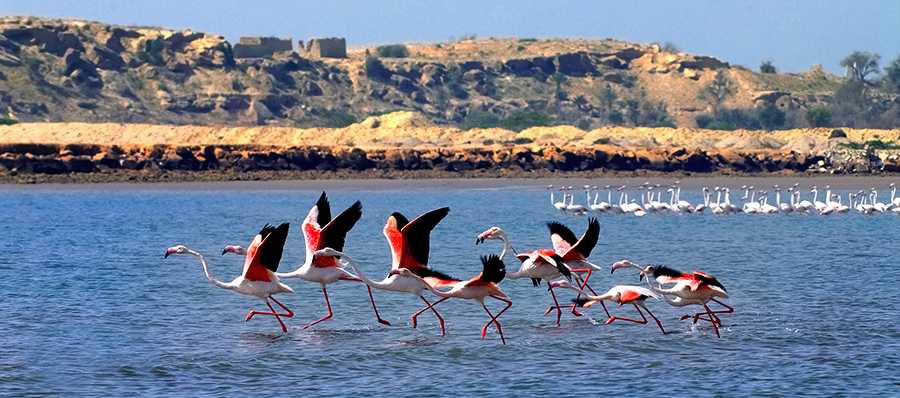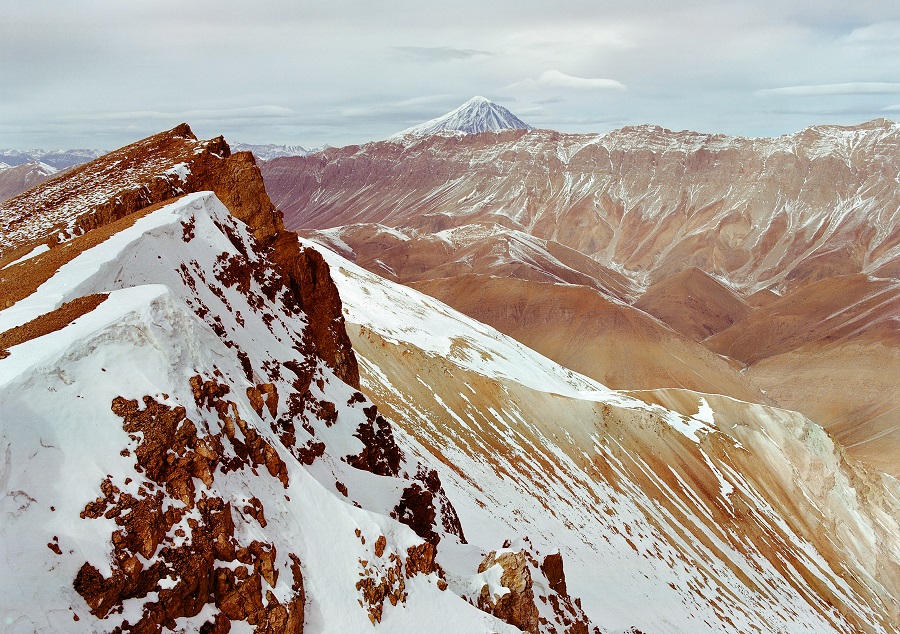Overview
General information
Iran (officially the Islamic Republic of Iran) is a large country located in the Middle East. It is bordered to the north by the Caspian Sea and the south by the Persian Gulf. With an area of 1,648,195 square kilometers, Iran is the 17th largest country in the world. It is a proof you have to spend more than a couple of days in Iran!
Tehran, the capital city of Iran, is the country's largest and most populated city. Isfahan, Shiraz, Tabriz and Mashhad are other major cities of the country.
Persian (Farsi) is the official language of the country and is widely spoken. A large number of people also speak other languages/dialects namely Azeri, Kurdish, Luri, Arabic, Baluchi, Gilaki, Mazandarani/Tabari, and Turkmen.
Geography

Bordering Countries & Coastlines
Located in southwestern Asia, Iran shares its entire northern border with the Republics of Armenia, Azerbaijan, Turkmenistan (all parts of the former Soviet Union). Of all the 2,670 kilometer northern borders, 650 kilometers is coastline border with the Caspian Sea. Iran's western borders are shared with Turkey in the north and Iraq in the south. Afghanistan and Pakistan are Iran’s neighbors from the East. To the south, Iran’s border is the long coastline of the Persian Gulf and Oman Sea.
Persian Gulf is the shallow marginal part of the Indian Ocean. The sea area of 240,000 square kilometers start from the Arvand Rud delta to the Strait of Hormoz, which links it with the Sea of Oman. It is bordered on the north, northeast and east by Iran, on the northwest by Iraq and Kuwait, on the west and southwest by Saudi Arabia and Qatar, and on the south and the southeast by the UAE and partly by Oman.
Islands

Iran has the largest number of islands in the Persian Gulf, the most important of which are as follows: Minoo, Kharg (Iranian oil terminal, site of one of the world's largest deep-water oil ports), Sheikh Sa'ad, Sheikh Sho'ayb, Hendurabi, Kish (a free zone and the largest island of Iran in the Strait of Hormoz), Farur, Siri, Abu Mussa, the Greater and Lesser Tumbs, Qeshm, Hengam, Larak, Farsi, Hormoz, and Lavan.
The southern part has many ports too. The most significant Iranian ports on the Persian Gulf are Abadan, Khorramshahr, Bandar-e Imam Khomeini (former Shahpur), Mahshahr, Deilam, Genaveh, Rig, Bushehr, Bandar-e Lengeh, and Bandar-e Abbas.
Rivers
Several rivers are flowing inside Iran mainland, the only navigable of which is the Karun (920-km). Other large rivers are: The Atrak (535 km), Dez (515 km), Hendijan (488 km), Jovein (440 km) Jarahi (438 km), Karkheh (755 km), Mand (685 km), Qara Chai (540 km), Sefid Rud (795 km), and the Zayandeh Rud (405 km). During the summertime, there is little water flowing in the mainland rivers.
Mountainous Areas & Deserts

Iran has two mountain ranges. The high Alborz range in the north rises 5,670 meter at Mount Damavend (the tallest peak in the country) and spreads from the southern part of the Caspian Sea all the way to the east close to the border lines of Khorasan. Zagros Mountain Range is another mountain range exceeding from northwest to southeast.
The eastern part of Iran country is the location of two salt deserts: Dasht-e Kavir and Dasht-e Lut with 1,287 km total long.
Economy

The economy of Iran is run by different forces; central planning, state ownership of oil production, agriculture, and private trading and service ventures joined together to move the economy.
Iran's Official unit of currency is the Iranian Rial but Iranian people always use a more colloquially and historically known denomination of Tomans.
10 IR = 1 Toman. Everyone uses this word instead of Rial except for some special cases. It is common in Iran for a shop keeper to ask for 100 Tomans for an item that costs 1000 Rials.
If you follow the Iran news, you may be aware that the government cabinet has approved a call from the country’s central bank to change the currency from Rial to Toman. It is unclear when new Toman coins and notes will be minted and printed. If you are planning to exchange your money before arriving in Iran, it wouldn’t hurt to check the news beforehand.
Iran expects to attract billions of dollars of foreign investment by providing more favorable investment ground, such as reduced restrictions on tourism bureaucratic process and free-trade zones like in Kish Island.
Iran is one of the largest oil producer in the world and enjoys the world's second largest natural gas reserves. However, the government is putting an extra focus on non-oil revenue by increasing state investments in tourism, agriculture, and marketing.
The export-based agricultural products include dates, flowers, and pistachios. Iran has also developed a successful biotechnology, nanotechnology, and pharmaceuticals industry. Iran's trading partners are Germany, France, Italy, Russia, China, Japan and South Korea.
Agriculture

Agriculture is one of the historical industries in Iran. Domestication of goats dates back to 10,000 BC. Fruits like peaches were first imported to Europe from Persia. Natural archeological studies proved tulips were first cultivated in ancient Persia. It is interesting to know the terminology of the herb “spinach”; the word spinach is derived from the Persian word Esfenaj. The Chinese referred to it in 647CE as 'the herb of Persia'.
History can be very delicious knowing ice cream was made in Persia since 400 BC, and cookies family tree lead them to Persian kulucheh in the 7th century.
The domestication of chickens dates back to 5,000 BC. It is funny to know that mid fifth century BC poet Cratinus (Athenaeus) calls the chicken "the Persian alarm". In Aristophanes’ comedy The Birds (414 BC) a chicken is called "the Median bird", which points to its introduction from Persia.
Today
Roughly one-third of Iran's total surface area is arable farmland and less than one-third of it is irrigated. The western and northwestern parts of Iran have the most fertile soil.
It was in late 1990s that agriculture covered about one-fifth of the country’s GDP which led to employment of significant population of the workforce. It was at the same time that Iran became self-sufficient in food production.
Temperature fluctuates widely in different parts of the country which make cultivation of various crops including cereals (wheat, barley, rice, and corn), fruits (dates, figs, pomegranates, melons, and grapes), vegetables, cotton, sugar beets and sugarcane, pistachios, nuts, olives, spices e.g. saffron, tea, tobacco, and medicinal herbs possible.
Iran was the world's largest pistachio producer with 40% of the world's output in 2005 and the world's largest producer with 81% of the world's total output.
When you are leaving Iran (to prepare to come back again very soon!) make sure to buy some pistachio and saffron as a souvenir for your family and friends. We guarantee that they will appreciate it a lot!